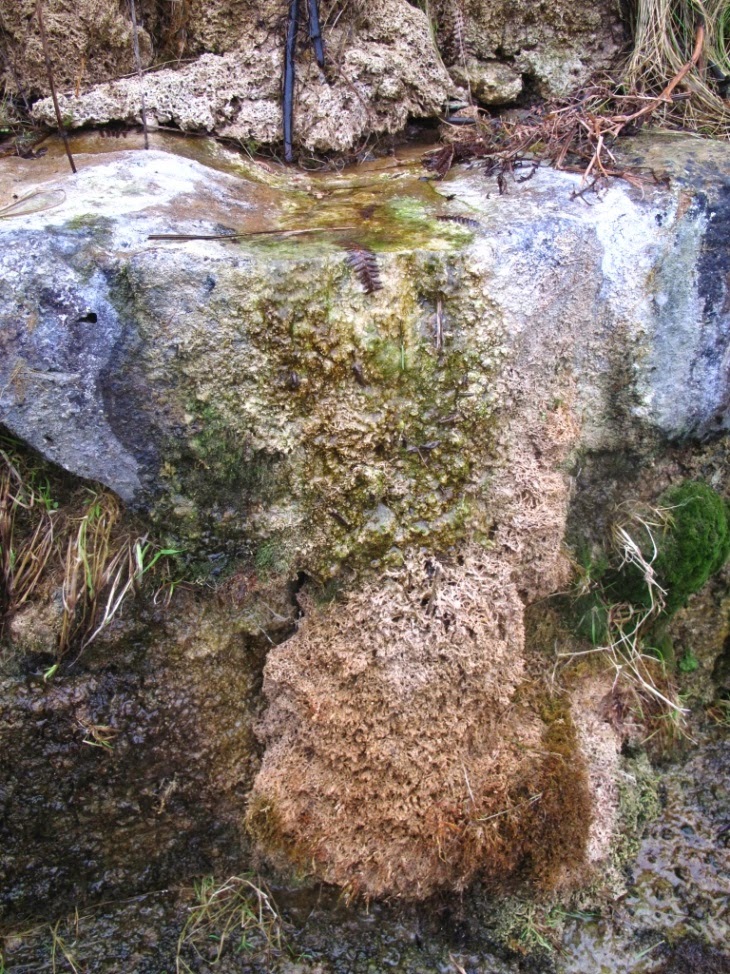 |
| Gareth Farr collects a sample of water seeping out of a moss covered block of tufa. Photo (C) Stewart Campbell |
If you are a keen gardener you will know that water quality and geology can influence the range of plants that will successfully grow in your garden. This is also true for the many species of moss (or bryophytes) that live in the UK.
In areas where rocks rich in calcium (such as limestone) occur you may notice the formation of tufa. Deposited by water, tufa is just like the limescale that forms in your kettle. The tufa forms near springs and seepages in the environment and replaces moss and other organic remains with stone – hence the name ‘petrifying spring’. When the occurrence of tufa is associated with a moss called Palustriella commutata the habitat is considered to be very special. These special habitats are called ‘Annex 1 habitats’. It is the job of the environmental conservation organisations to monitor and report on the health of these habitats to ensure they are protected for the future.
 |
| Damp places like this cave entrance (Clydach Gourge, South Wales) make ideal places for tufa loving mosses and other plants |
Thus I began work on a project, co funded by Natural Resources Wales (NRW) in 2013, its aim to undertake the first survey of the condition of the petrifying springs habitat in Wales. We noticed that generally the habitat was in a favourable condition, with few obvious pressures, perhaps due to the small and isolated nature of many of the sites. The petrifying springs occurred in a variety of settings including: coastal lowlands and cliffs, river gouges, wetlands and in the vicinity of historic lime waste tips.
Our most important observation was that the special moss (Palustriella commutate) was not always dependent upon the occurrence of active tufa deposition and at one rare site it occurred in a dominantly acidic setting. These observations show us that nature does not always conform to the groupings which scientists like to use and suggest that our understanding of this habitat has a long way to go.
 |
| Small seepages of water on a cliff in Anglesey provide perfect conditions for the formation of tufa (the beige coloured stuff) which forms on the branches and leaves of the moss. |
A more detailed article has recently been published in Field Bryology and an open access copy can be found online here.
by Gareth


Comments